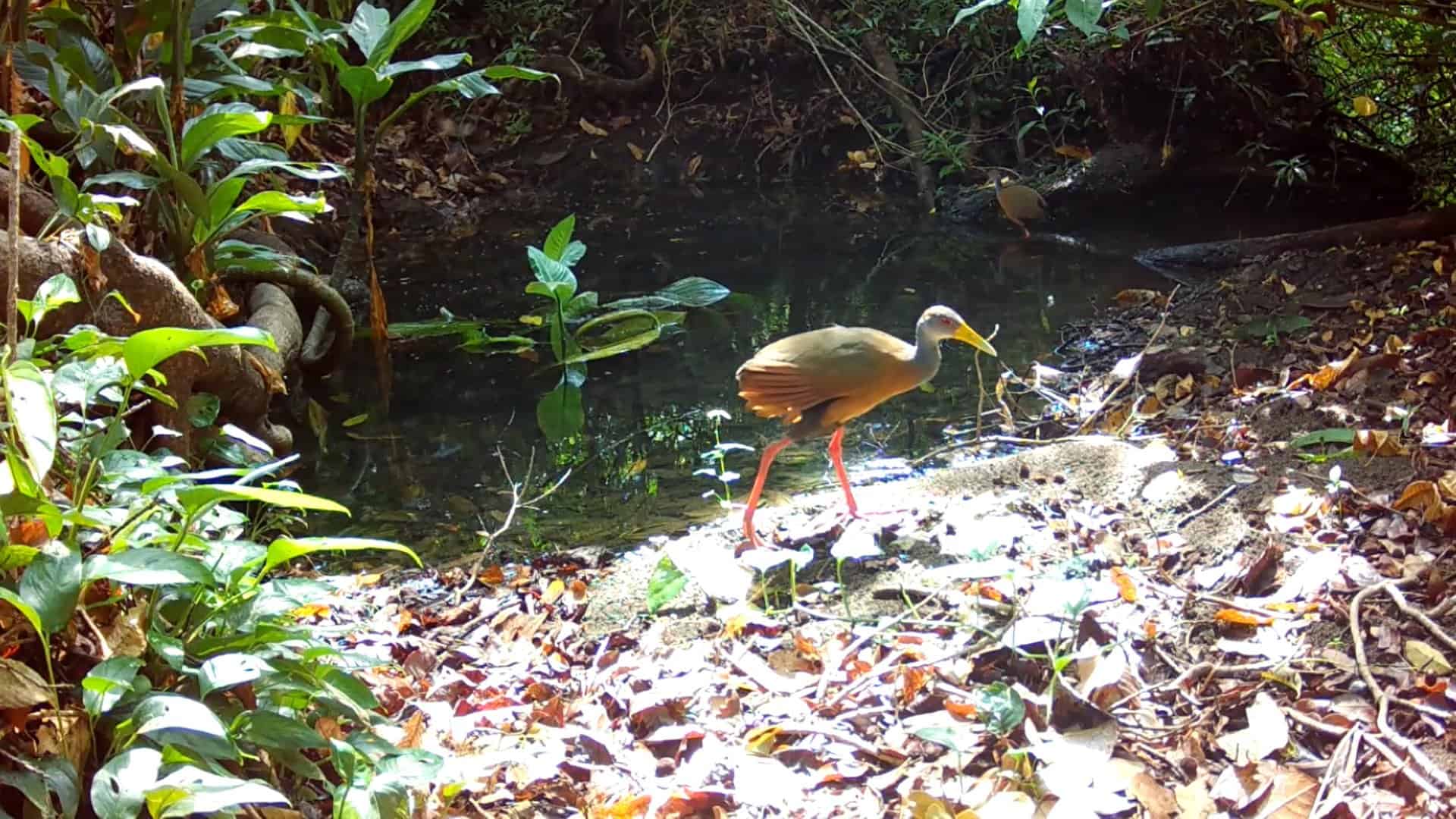Today we meet the gray-necked wood-rail (Aramides cajanea). Or do we? Maybe we’re meeting the gray-cowled wood-rail? Or perhaps the russet-naped wood-rail? Who knew one little bird could be so confusing.
I’ll be honest with you, I sat down thinking I was writing an article about the gray-necked wood-rail, a colorful little bird that you often see walking around on the ground in moist habitats. I was going to focus on its raucous call and the fact that it has a series of hilarious sounding Spanish names.
I messaged a friend because I couldn’t remember one of the silly-sounding Spanish names, and he happened to be in the field with Adrian Arroyo Pacheco, a Costa Rican bird expert. He ended up informing me that the bird I was asking about was recently split into two different species, information that was lacking in all of my bird literature. The former gray-necked wood-rail is now the russet-naped wood-rail (Aramides albiventris) and the gray-cowled wood-rail (Aramides cajaneus). The difference seems to be where they’re found in Costa Rica, some differences in their calls and how dark a brown spot on their neck is.
Who knew this was going to be such a situation? Both species generally fill the same niche, living in the same types of environments, eating the same things and so on, so let’s move forward.
On to funny Spanish names! Whoever taught me the Spanish name called them chirincocos, which is definitely fun to say. One of my bird books says it’s the rascón cuelligrís. That sounds more official. Two more fun ones that I’ve come across are pone-pone and cocaleca.
No matter what you call them, you can generally find them near water. Walking singly or in pairs (they’re monogamous, forming long-lasting pair bonds), with their short tails pumping. They’re often observed flipping over leaflitter looking for seeds, berries and small invertebrates to scarf down.
If they live in your area and you haven’t seen them, you’ve probably heard them. They call in the evening in a duet of loud, resonant notes that one of my bird books likens to drunken chickens. It’s definitely worth finding and listening to on the internet. I’ll include a clip of them calling in the video below.
I’ve seen them in the field and recorded them many times with my camera traps, always near a stream, estuary, or mangrove. I once heard what must have been many pairs join together to sing at the setting sun at a little house steps from the ocean in the Osa peninsula, a concert that the residents said they listen to every evening.
I thought I had put together a short compilation of gray-necked wood-rail videos for your enjoyment, but now I know that’s not the case. So enjoy the video below and get to know… some wood-rails.
About the Author
Vincent Losasso, founder of Guanacaste Wildlife Monitoring, is a biologist who works with camera traps throughout Costa Rica. Learn more about his projects on facebook or instagram. You can also email him at: vincent@guanacastewildlifemonitoring.com






